
Recently Frank Robinson blogged about working with a collection of German notgeld coins. With permission, we're republishing his article here. Thanks! -Editor
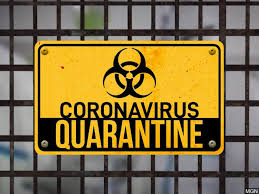 We're now seeing pandemic literature — personal accounts from people about coping with home confinement. My own normal life is much like quarantine anyway. Luckily my
business of selling collector coins, by mail and internet, is largely unaffected (though I can't buy at coin shows). Practically my only outings are to the post office. We're now seeing pandemic literature — personal accounts from people about coping with home confinement. My own normal life is much like quarantine anyway. Luckily my
business of selling collector coins, by mail and internet, is largely unaffected (though I can't buy at coin shows). Practically my only outings are to the post office.
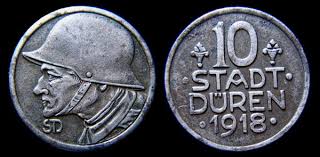 Recently quite a few hours were consumed working on a lot of over 800 notgeld coins I got from a German auction. These were issued by thousands of towns and businesses
during and shortly after WWI. (France also had similar local coins.) As a kid, knowing that "geld" meant money (my mother is German), I assumed "notgeld" meant something like "not
real money." Actually, "not" is a German word for "emergency." So working on these "emergency coins" during our own national emergency seemed fitting. Recently quite a few hours were consumed working on a lot of over 800 notgeld coins I got from a German auction. These were issued by thousands of towns and businesses
during and shortly after WWI. (France also had similar local coins.) As a kid, knowing that "geld" meant money (my mother is German), I assumed "notgeld" meant something like "not
real money." Actually, "not" is a German word for "emergency." So working on these "emergency coins" during our own national emergency seemed fitting.
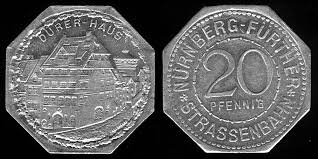 Many sport interesting pictorial designs. One noteworthy series of 45 was from Nurnberg, showing all different local landmarks and historical personages. My grandparents
were from Nurnberg and had a set of these. They're common and inexpensive. Over the years I've handled many, sometimes in original albums (less common). Many sport interesting pictorial designs. One noteworthy series of 45 was from Nurnberg, showing all different local landmarks and historical personages. My grandparents
were from Nurnberg and had a set of these. They're common and inexpensive. Over the years I've handled many, sometimes in original albums (less common).
Some notgeld coins were issued in prisoner-of-war camps. "Camp" in German is "lager." Prisoners "gefangenen." War is "krieg." Germans often make compound words — thus
"kriegsgefangenenlagergeld." There were also special issues using encapsulated stamps. Those are kriegsgefangenenlagerkapselgeld. One sees these words in German coin sale
catalogs. I remember using this as an example, when telling my small daughter about German compound words. Afterward she danced around merrily chanting,
"kriegsgefangenenlagerkapselgeld, kriegsgefangenenlagerkapselgeld."
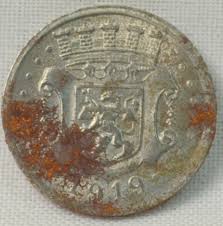 Most notgeld coins were made of iron or zinc, and often suffer from ugly rust or white encrustation. On many, a little work with a wire brush removes the crud. (I've
made a board with round slots to hold coins in place for that.) But several hundred needed more drastic treatment. These I put in a rock tumbler (another useful piece of
equipment) with some lemon juice (mildly acidic). After four hours nearly all emerged quite nice. Most notgeld coins were made of iron or zinc, and often suffer from ugly rust or white encrustation. On many, a little work with a wire brush removes the crud. (I've
made a board with round slots to hold coins in place for that.) But several hundred needed more drastic treatment. These I put in a rock tumbler (another useful piece of
equipment) with some lemon juice (mildly acidic). After four hours nearly all emerged quite nice.
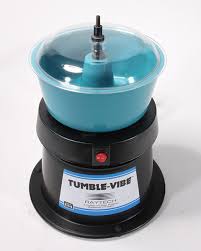 Happily this lot had come alphabetized by town in small envelopes. That saved some effort, but I did have to re-sort the ones I'd tumbled. Next, the real work: having
handled thousands before, most of the common ones I could recognize as such, but many I had to research. There isn't a good up-to-date catalog. I have two older ones that often
disagree, but between them I can get an idea about scarcity, to price accordingly. Happily this lot had come alphabetized by town in small envelopes. That saved some effort, but I did have to re-sort the ones I'd tumbled. Next, the real work: having
handled thousands before, most of the common ones I could recognize as such, but many I had to research. There isn't a good up-to-date catalog. I have two older ones that often
disagree, but between them I can get an idea about scarcity, to price accordingly.
About 150 better ones I pulled out to sell individually. The rest in group lots. I learned this shtick early in my coin dealing, when I put out a price list including many
common German coins at ten or twenty cents each. They didn't sell. Preparing my next list, I didn't feel like retyping all that (this was before word processing). So I just added
up the prices and entered "Lot of X-number of German coins" at that combined amount. Guess what? Everybody wanted to order it! Collectors love to play around with coins in batches
like that (I do too), and it's a very effective selling tool. Also far more efficient than hawking them one-by-one.
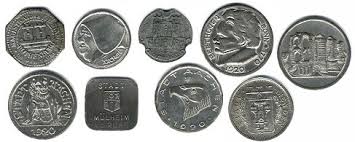
So the bulk of the notgeld coins I carefully organized into nice big group lots, each with all different varieties but uniform quality. (Quality control is another watchword
for my business.)
All in all, a lot of work. But having gotten this lot at a very nice price, little over a dollar per coin, I'll wind up making a couple of thousand on the deal — while having
had a lot of fun, and improving my notgeld knowledge. Though my hand is a bit sore from all the wire brushing.
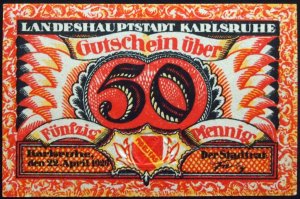 After the era of notgeld coins, in the early '20s, came the time of paper notgeld notes, from Germany and, even more prolifically, Austria. The varieties are endless,
and you can buy them even cheaper than the coins. Sitting here I've also got a few thousand of those to work on. At least they don't need cleaning. After the era of notgeld coins, in the early '20s, came the time of paper notgeld notes, from Germany and, even more prolifically, Austria. The varieties are endless,
and you can buy them even cheaper than the coins. Sitting here I've also got a few thousand of those to work on. At least they don't need cleaning.
To read the complete article, see:
Life in difficult times: German notgeld
(https://rationaloptimist.wordpress.com/2020/04/04/life-in-difficult-times-german-notgeld/)

Wayne Homren, Editor
The Numismatic Bibliomania Society is a non-profit organization
promoting numismatic literature. See our web site at coinbooks.org.
To submit items for publication in The E-Sylum, write to the Editor
at this address: whomren@gmail.com
To subscribe go to: https://my.binhost.com/lists/listinfo/esylum
Copyright © 1998 - 2024 The Numismatic Bibliomania Society (NBS)
All Rights Reserved.
NBS Home Page
Contact the NBS webmaster
| 








